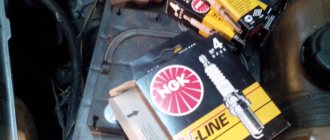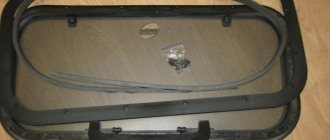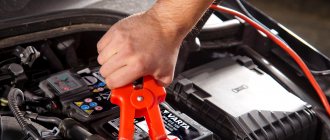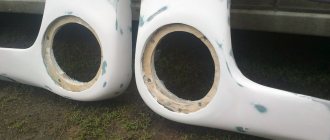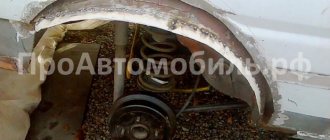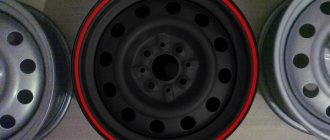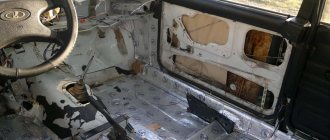Types of sealants
Special sealing compounds for headlights have a very specific purpose. They are used for minor repairs and installation of automotive optics made of transparent plastic or glass in order to obtain the most airtight connection.
Waterproof sealants perform the following tasks:
- prevent the penetration of water, air and dirt into the device;
- eliminate the appearance of condensation and a decrease in the quality of lighting;
- minimize the risk of damage to the diffuser and other metal elements;
- ensure strong joining of parts without the risk of peeling off.
In car stores, sealant for gluing headlight glasses is a popular product, because optics often fail and are the first to deteriorate during accidents. Most of these products are suitable not only for materials for making headlights: sealants perfectly glue wood, leather, fabrics, ceramics, and many are used for metal.
Sealing agents can have different compositions, but most of them are sold in finished form and are single-component.
Silicone sealants
Products containing silicone are widely used in the installation of headlights, lanterns, and car windows. They are created on the basis of rubber and its subtypes (siloxanes, fluorosiloxanes and others), and represent a transparent elastic mass. Silicone sealants also contain vulcanizers, which impart strength and elasticity like rubber, ensuring no damage when in contact with water.
Typically, silicone compounds are used to seal cracks up to 6 mm deep or glue various parts together to seal joints. They help eliminate minor defects and unevenness of the base, easily withstand heating up to +250 degrees and above (products with the addition of copper - up to +375 degrees), and do not deteriorate from temperature changes. The big disadvantage of silicone is its poor tolerance to petrochemicals and a number of other substances that are used in cars . Therefore, silicone sealants can be used where there is no contact with such liquids.
Polyurethane compounds
Products with polymers based on urethane groups are considered the most popular for the repair and installation of optics. Car enthusiasts prefer them for their versatility, because sealants are excellent for gluing and protecting many body and working parts of a car. Their properties are:
- high degree of adhesion with most known materials - plastic, glass, ceramics, rubber, wood, metal;
- excellent moisture resistance, air tightness;
- work in a wide temperature range, tolerance of changes from -60 to +80 degrees or more;
- long service life (up to 25 years);
- resistance to petrochemicals, weak acids, alkalis, other aggressive substances, as well as microbes, fungi, mold;
- uniform filling of even small cracks and seams, the ability to glue optics of any geometry;
- no shrinkage after polymerization.
Polyurethane compounds, after hardening, have slightly less elasticity than silicone ones. Because of this hardness, they are not recommended for use on connections subject to strong vibration, although they are good for headlights. Also, sealants are not suitable for installing dismountable joints: they are so strong that removing them will be problematic.
Sealants contain toxic solvents, so safety precautions must be strictly observed when applying and drying. With prolonged exposure to temperatures above +100...+120 degrees, the sealant layer is destroyed, which must be taken into account during operation.
Anaerobic compounds
Such products harden only when contact with oxygen ceases, maintaining their plasticity in air. They can be slowly applied to the parts and pressed tightly together, which is convenient for the craftsman. But in a vacuum, the process of rapid polymerization begins, as a result of which a strong seam is formed in a couple of minutes. Anaerobic sealants do not deteriorate at temperatures ranging from -80...+175 degrees, and are resistant to:
- fuel;
- oils;
- antifreeze;
- alkalis;
- weak acids.
The products create a reliable cushioning layer and help mount optics, front and rear windows, as well as seal body joints, threaded connections, and flanges. After hardening, a hard, durable plastic is formed at the site where the composition is applied, which lasts a long time, does not deform, does not shrink or expand. The ease of use is beyond doubt - there is no need for quick application, no physical effort for gluing, safety for humans and the environment.
Heat-resistant sealants
These compounds are characterized by increased strength and lack of reaction to high temperatures (usually up to +375 degrees). They are rarely used for repairing and installing headlights, because such connections are not subject to thermal stress. The finished seam is not afraid of shocks, shocks, vibrations, water and aggressive substances. The disadvantages of heat-resistant sealants are increased cost and long polymerization (8-12 hours until completely dry).
Criteria for selecting sealant for headlights
The main criteria for selection are color, operating temperature range, adhesion strength, elasticity and resistance to dynamic loads (in particular, prolonged vibration). In addition to the technological characteristics, it is important to pay attention to the ease of use and removal from the surface.
Bonding level
A high-quality sealant should reliably fasten the elements of the optical system. To ensure high adhesion, when choosing a product you need to pay attention to the material (metal, plastic) and gluing conditions.
Anti-vibration properties
The movement of the car creates a dynamic load on all elements of the body. If the adhesive material is not resistant to vibration, it will quickly fill with microdefects, and the connection will quickly lose its tightness.
Most sealants have good resistance to mechanical loads and anti-vibration (damping) properties.
Ease of removal
Residue of adhesive should be easily removed from hands, work benches, surfaces around the seam and the body when repairing the headlight. Depending on the type of composition, a hair dryer or solvent is used for this.
Temperature resistance
High temperature resistance is important due to the heating of the optical instrument during operation. The lower limit is given to reflect the full operating range and provide resistance to temperature changes.
Average operating temperature depending on the base:
| Glue type | Operating t range, °С |
| Silicone | Up to +250 |
| Polyurethane | -60…+80 |
| Anaerobic | -80…+175 |
| Heat resistant | Up to +375 |
| Butyl (butyl rubber) | Up to +250 |
Transparency
Transparent sealant is necessary for local headlight repairs, filling microcracks and other surface defects. Black compounds and tapes are suitable for application around the perimeter of glass.
Packaging volume
Packaging volume can range from 40-50 ml to 300-500 ml. When choosing, you need to take into account the price-to-weight ratio of the product, storage time and conditions, as well as the expected consumption for the required number of headlights.
Cost and quality
Experienced car enthusiasts recommend choosing products from the middle and high price segments, because... Cheap compounds do not seal joints well and reduce the luminous flux of the headlight. The released volatile compounds settle on the glass, leading to clouding.
Rating of the best sealants
To work with automotive optics, you need to purchase high-quality products so as not to experience problems with the functioning of lighting devices.
ABRO WS 904
ABRO WS 904 sealant is one of the most popular according to user requests. It is sold in the form of adhesive tape in rolls of different sizes, made on the basis of vulcanized polyisobutylene, a derivative of artificial rubber.
This butyl headlight sealant is highly elastic and easy to use - you just need to cut a piece of tape of the required size, stretch it and stick it to the surface. It only takes a few seconds to connect the ends of the tape to each other - the polymerization process occurs quickly. At low ambient temperatures, it is recommended to additionally heat the sealant with a hair dryer.
The advantages of ABRO WS 904 tape are as follows:
- low consumption - the packaging is enough to completely seal a set of headlights;
- ease of installation - the tape does not stick to your hands, is pliable, can be easily cut, and stretches to achieve the desired thickness without effort;
- high degree of adhesion to most materials;
- absence of toxic emissions and unpleasant odor;
- strength, long service life after hardening, reliability and complete tightness of the seams.
Dow Corning 7091
It is recommended to purchase this sealant when working with dissimilar materials that have unequal coefficients of thermal expansion. It is capable of creating high-quality joints at the junctions of glass and metal, glass and plastic, and metal and plastic, so it is perfect for installing and repairing automotive optics.
Dow Corning 7091 Silicone Sealant is a one-pack, ready-to-use product that is both durable and flexible. The sealant is suitable not only for working with car headlights, but also for installing LED lamps, various electronic devices and complex mechanisms. After polymerization, the formed seam will reliably seal the joint, while it is not destroyed by temperature changes and can be used at -55...+185 degrees. The sealant is easy to further process, if required, and is a good dielectric.
DoneDeal DD6870
The composition of DoneDeal DD6870 refers to polyurethane sealants, includes urethane groups, petroleum products, various polymers, adhesion enhancers and other additives.
It can be used for installation and sealing purposes:
- headlights;
- glass;
- lanterns;
- lamps;
- hatches;
- instead of gaskets.
The sealant dries completely within 15–30 minutes after application, has high strength seams, good adhesion to most materials, and does not crack under the influence of vibration or shock. The product is characterized by moisture resistance and works without loss of properties in the temperature range from -60 to +270 degrees.
3M PU 590
3M PU 590 sealant is produced in the USA, has a polyurethane base, and is packaged in convenient tubes of 300–600 g. It does not tolerate high temperatures (withstands up to +100 degrees), so it is not used on hot car components. The product polymerizes quickly (in 25–30 minutes), does not react to acids, alkalis, solvents, is resistant to moisture and UV radiation, and reliably connects even dissimilar materials. Once cured, the sealed joint can be painted over with most automotive paints.
Emfimastic PB
This brand of adhesive-sealant is produced in France and contains polyurethane groups and various improving additives. Ethermastic glues homogeneous and dissimilar materials as reliably as possible, ideal for installation and repair of automotive optics. The composition is odorless, hardens in half an hour, does not shrink, and does not crack over time. It is not harmful to humans, has no unpleasant odor, and can be used even indoors. To apply this flexible sealant you will need a hand or air gun.
Types of materials for gluing
To glue the headlight, glue is most often used. The following basic substances are used to glue car headlights:
- Terostat - 8600 2K;
- Terostat - 8599, 8597, 8596
- Terodicht - Black;
- Terodicht - Elastik;
- Permatex;
- Abro;
- Body.
Adhesive sealant for glass and headlights PERMATEX 65 AR Silicone Glass Sealer
The second way to glue cracks in car headlights is butyl tape. According to the manufacturers, it has enough advantages:
- ensures durability and reliability of fasteners;
- resistant to significant temperature changes;
- quickly sets to the surface;
- seals glass.
Butyl tape for gluing car optics
Sealed adhesive for repairing car headlights is made in the form of pastes or liquid mass. After that, it is packaged in jars, tubes or other containers. The tubes are equipped with dispensers, which helps to accurately direct the substance to hard-to-reach places.
There are 2 types of sealed glue:
- one-component . Sold in a tube and initially ready for use, presented as a liquid mass;
- two-component . Presented in the form of a paste or dry mixture. As a rule, it is sold together with a solvent. Before gluing, it is diluted to the desired consistency before use.
One-component adhesive for car optics
Instructions for use
Before using any product, regardless of its shape and type, the surface must be carefully prepared. The headlight and base are cleaned of dirt and old sealant (if any), degreased, while working carefully so as not to damage the lens. Then apply the product in a thin layer, following the instructions:
- liquid formulations are distributed using a dispenser;
- paste-like products are squeezed out using a glue gun;
- The tapes are cut and glued by hand.
If the sealant is not anaerobic, the parts must be pressed well together. When the room is cold, it is recommended to warm up the seam and glued elements with a hair dryer. Afterwards you need to wait until it dries completely (usually no more than 30 minutes).
How to glue the headlight glass? Review of sealants and methods
Using the first sealant you come across is fraught with subsequent defects. More precisely, when using some types of sealant, it is possible to release volatile compounds during its use, which threatens unwanted sediment, the same compounds on the headlight glass. What does plaque have to do with it - the sediment will most likely be on the inside, where the connections simply have nowhere to go, due to the low air exchange through the valve in the headlight, if there is one at all. As a result, sealant fumes can ruin the appearance of your headlight glass. An example of the deposits of such joints from sealant is shown in the photo below...
... when approaching
Unfortunately, this situation cannot be corrected. If such sealant vapors are deposited, the headlight glass will have to be replaced again. It’s good if the deposits settle only on the glass and not on the reflector, otherwise it threatens to completely replace the headlight unit. As a rule, such sealants include those used to replace rubber or paronite gaskets. For example, this sealant...
Removing old sealant
Most often, when installing a new headlight, particles of the previous sealing compound are present on the base. Removing it can be a problem, especially if the product is polyurethane based. You must work carefully so as not to scratch the base or damage important elements. There are several ways to remove sealant:
- heat the dried composition with a hairdryer, and after softening, carefully remove it (it is important not to melt the plastic on the optic covers);
- scrape off particles of sealant with a sharp knife or a flat-blade screwdriver;
- wipe with solvent.
When installing headlights, it is better to use proven, reliable sealants and strictly follow the instructions for their use - in this case, the optics will last a long time and will not cause problems on the road.

